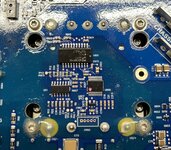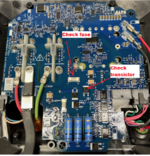JP racing
Well-known member
- Likes
- 58
- Location
- New York, NY
Does anyone know of anyone who has had success working on the low voltage DC section of the battery packs? My low voltage section is dead and I have neither the parts or equipment to do a rework of the board.
My other alternative is to try to rig up an alternative 12v power source which I would like to hear if anyone has done that!
Thanks all, struggling to get going for race season, my season opens Sunday.
My other alternative is to try to rig up an alternative 12v power source which I would like to hear if anyone has done that!
Thanks all, struggling to get going for race season, my season opens Sunday.



